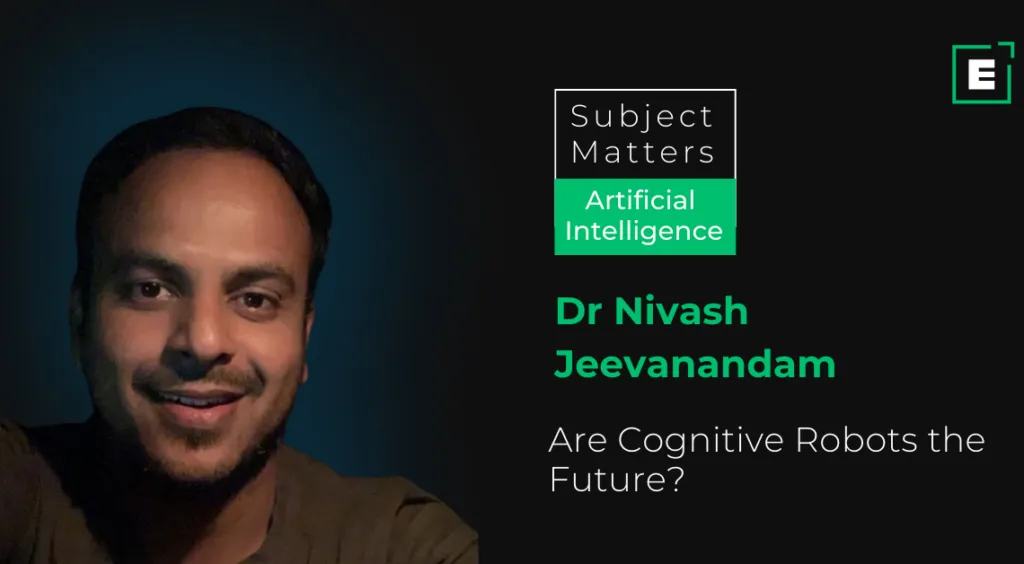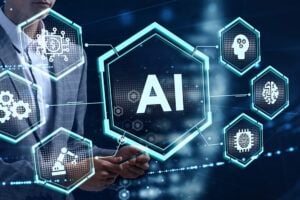What Will an Era Cognitive Robots Look Like in the Future?

Today, the distinction between automatic machines and what we call robots is getting increasingly blurred. In contrast, robots were initially designed to move like animals. As a result, many robotics researchers are working to create robots that can coexist with humans and assist one another. Recently, there has been a surge in social demand for robots to become our partners. Robots must see, understand, communicate, and travel safely in human environments to do this. Although the abstract argument that “a high level of cognitive function is required for those robots” is unarguable, the specific types of cognitive functions required remain unknown. That brings us to the subject of cognitive robots, a breed of robots that have near-human cognition.
What Does Cognition Mean?

Cognition is defined in psychology as the process of acquiring information and understanding through the senses, thoughts, and experiences, meaning that cognition is mostly a one-way process from perception to comprehension of the world. Moreover, the meaning of cognition has been broadened in the fields of behavioral biology and AI, which focus more on dynamic problems, to include not only the one-way process of understanding a given situation but also the process of creating motion with the functions of learning, memory, and motion controls as a signal loop.
What are Cognitive Architectures?
The original idea behind cognitive architectures was to create a fully functional cognitive system, which dates back to the 1950s. Many other architectures have emerged to meet this formidable obstacle; a recent survey indicates that this number may have passed several hundred.
Robo-Soar, CARACaS, and RoboCog are just a few that are designed specifically for use in robotics. Sadly, most systems are built in various programming languages and use vastly different methods to model the mind. It is challenging to expand, integrate, and re-use elements of these systems because they are typically built from a wide variety of specialized modules. In fact, it may be one of the factors that have led to the proliferation of so many building types. To acquire additional flexibility for future architecture extensions, the authors of recent research on cognitive architectures associated with the iCub robot decided to build everything from scratch.
How do Cognitive Robots Impact Various Industries?
Cognitive robots can potentially transform many industries, from healthcare to manufacturing. Let us discuss the future of cognitive robots and the sectors they will revolutionize.
1. Healthcare

The healthcare sector stands to gain significantly from the development of cognitive robotics. Cognitive robots can help doctors and nurses with patient care by analyzing large quantities of data and making educated decisions. To better diagnose a patient, a cognitive robot might look at their medical records, symptoms, and test findings. In fact, it could result in more timely and effective care, saving lives.
So, in the future, we could have real-life versions of the affable Baymax-like robots (from Big Hero 6) doing rounds in hospitals and supporting doctors and caregivers to offer better healthcare.
2. Manufacturing
Cognitive robotics is expected to revolutionize not only healthcare but also the manufacturing sector. Cognitive robots can boost industry output by eliminating human labor from routine activities. Human intervention can be minimized because of their flexibility and ability to respond to new information in real-time. Manufacturers benefit from lower production costs and an increase in product quality as a result of this.
3. Transportation
Cognitive robots could be helpful in the transportation industry. These bots can be crucial in guaranteeing the security and efficacy of transportation networks, especially in light of the growing prevalence of autonomous cars. Such robots can consider factors like traffic, weather, and road conditions when making decisions. There might be fewer accidents and less congestion, creating a better transportation system for everyone.
4. Agriculture
Cognitive robots will have an effect outside these sectors. In reality, the range of possible uses is enormous. Cognitive robots can help farmers through crop monitoring, irrigation system optimization, and autonomous harvesting. Better agricultural yields and sustainable farming methods might result from this.
5. Customer Service
Similarly, cognitive robots can provide tailored and practical assistance to customers in customer service. These robots can improve the customer experience by providing personalized recommendations and solutions based on an analysis of client data and preferences. It has the potential to boost customer happiness and brand loyalty.
Imagine the iconic mascot, Mr. MacDonald, as a robot who can think almost like a human and respond to children. How many more Happy Meals do you see him selling?
Will Cognitive Robots Disrupt the Job Market?
Although cognitive robotics hold many promising applications, some worry about how they may affect jobs in the future. There is concern that humans will be rendered obsolete as cognitive robots become more sophisticated and have higher capacities. In fact, cognitive robotics may cause a change in labor dynamics rather than the loss of jobs, according to researchers. As machines do more routine, tedious work, humans will have more time and bandwidth for more sophisticated, creative, and empathetic endeavors.
The potential of cognitive robotics to revolutionize numerous industries is enormous. In the realms of transportation, agriculture, healthcare, and manufacturing, cognitive robotics have an extensive and varied range of applications. Although workforce repercussions are a matter of concern, cognitive robotics can improve overall quality of life, productivity, and efficiency. In light of ongoing technological progress, industries must adopt and accommodate the transformations induced by cognitive robotics. They can thereby maintain a competitive edge and capitalize on the advantages offered by this revolutionary technology.
Write to us at content@emeritus.org
NOTE: The views expressed in this article are those of the author and not of Emeritus.






